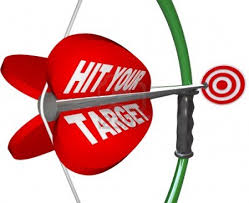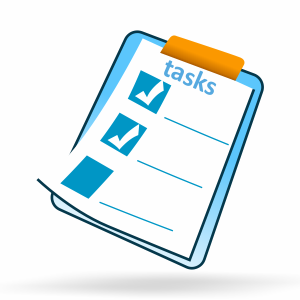FIELD STUDY 5: Learning Assessment Strategies
EPISODE 3
Name of FS Student: Judyan P. Macalling
My Target
 At the end of this
activity, you will be informed on the principles of authentic assessment and
its usefulness in the classroom.
At the end of this
activity, you will be informed on the principles of authentic assessment and
its usefulness in the classroom.
My Tools
MY
INTERVIEW NOTES
How
does authentic assessment differ from traditional assessment?
Authentic
assessment evaluate students abilities in a real world setting, students
apply their skills and abilities to authentic or in a performance based or on
projects, it allows learners to integrate what they have learned,
individually or by a group, while in traditional assessment, or a pen and
paper test, most of the time, students are engaged in rote learning or
memorization the low level learning skill which is exercised when taking a
passive test.
How
does authentic assessment helps in the improvement of students performance in
the classroom?
Authentic assessment helps
students not only for them to use what they have, which are their ability and
skills to do a task in a real world context, it also helps students to
discover their hidden skills which they have not thought they can do,
authentic assessment also help to assess fairly mainly because in today’s
most recent curriculum, the k-12, students are known as diverse learners
which have different techniques in learning, multiple intelligences and
different behaviours as well, so in assessing learning and to help learners
improve their potentials, authentic assessing really helps teachers.
What
are the authentic assessment tools do you use?
As a science teacher, there are varied
assessment tools that I use to assess authentically, like in laboratory
exercises, I ask my students to perform an activity by group, and I also use
oral recitation to assess if they are aware of the things around them, like
making jingles regarding our topic, this are only some of the assessment
tolls that I use to assess authentically, and as I learn how learners respond
to how I assess them, I gather more ideas on what to do to improve
instruction each and every day.
ANALYSIS

1. What
is Authentic Assessment?
Authentic
assessment is a way of assessing students with their ability and skill in
learning by doing, and learning by making, it evaluates the total learning
ability and strength of diverse learners, it requires learners to use their
knowledge and skill to generate meaningful results in whatever task they are
asked to do, this method helps to inject the ability of students to learn in
activities that they are assigned to do so.
2. How
was authentic assessment used? Was it used to measure learning through the
product?
Authentic assessment is used to measure through the
product and a process as well, though it doesn’t encourage rote learning or
memorizing but encourages learners to apply their knowledge by their skills
and ability to do and create a thing in their own style, in their own way,
the ability to work individually or by a group whether in a written or oral.
REFLECTION

What are your insights and
feelings about the use of authentic assessment?
Authentic assessment helps a lot
in assessing students learning throughout activities related to a specific
subject matter, it is advisable to be used for it is a technique that
brings out the best in learners, for every child is unique and have multiple
intelligences, authentic assessment also requires students to be close to
what their field of specialization through bringing them close to real life
situation, but in assessing this way, raters or the teachers should have
rubrics in rating so bias will be avoided, cause unlike a passive test,
assessing authentically is nearer to have subjectivity.
Describe how the teacher used
the authentic assessment?
The authentic assessment have been used by
administering activities, individually and by group, and oral recitation
that allows learners to relate the lesson in real life, and ask students to
bring materials for laboratory experiments like what they have used while
discussing properties of light and it’s importance, even though the teacher
have less materials to demonstrate the lesson for him to be able to relate
it well in real world setting, he makes sure to find ways
to make the students see what they are discussing by the use of models and
pictures and a simple sketch on the board, as the saying goes, if you can’t
bring the child to the mountain, bring the mountain to the child, and as a
product, the teacher requires the students to come up with a project with
regards to a specific lesson of the grading period for him to know the
overall learning of the student.
How did you feel about the
teacher’s experience in the use of authentic assessment?
I admire how the teacher relates
every lesson in action by the letting the learners learn by doing it, and
as a facilitator, he is there to facilitate learning of each learners even
if they are somewhat hard to handle, in how the teacher use authentic assessment,
I myself appreciated every lesson he discuss after the students learned
them by doing and making this and that on their own, and when you go deep
the process and it’s product, I come to realize the importance of science
and the use of it in our lives, not only by listening to the teacher alone,
but in being able to demonstrate the concepts by yourself.
What could be the gains of
the students and teachers in using authentic assessment?
As a teacher, authentic assessment really helps
in evaluating your students overall performance because in this method of
assessing, it allows teachers to assess not only the knowledge of the
learning about something but the learner’s behaviour, how they learn best,
and what to inject for instruction to be better, and as for the learners,
learning by doing something makes learning more fun and exciting, it let
the students explore and learn and discover their strengths.
Which part of the teacher’s
use of authentic assessment do you feel like improving or revising?
I don’t see anything to be revised because in
the first place, the teacher teaches his students to revise the way they
learn. The teacher incorporates both traditional and authentic assessment
tools to students. The student’s improvement in speaking in front of the
class and how they collaborate with each other when having activities,
and even their creativity in making a project improves, you can see it in
their outputs that they pass, it gets better gradually. Students learn
how to be independent in doing a thing, and it enhances their innate
abilities.
EPISODE 3
log me
|
Name of FS Student: Judyan P. Macalling
Course:
Bachelor of Secondary Education
Resource Teacher:
Mr. Melchor Abu
Cooperating School: Isabela National
High School
|
|
My Target
|
|
My Tools
For
this learning activity, please document the information gathered from the
interview with the teacher on authentic assessment. Write your documentation
using the activity form provided for you.
|
|
MY
INTERVIEW NOTES
How
does authentic assessment differ from traditional assessment?
Authentic
assessment evaluate students abilities in a real world setting, students
apply their skills and abilities to authentic or in a performance based or on
projects, it allows learners to integrate what they have learned,
individually or by a group, while in traditional assessment, or a pen and
paper test, most of the time, students are engaged in rote learning or
memorization the low level learning skill which is exercised when taking a
passive test.
How
does authentic assessment helps in the improvement of students performance in
the classroom?
Authentic assessment helps
students not only for them to use what they have, which are their ability and
skills to do a task in a real world context, it also helps students to
discover their hidden skills which they have not thought they can do,
authentic assessment also help to assess fairly mainly because in today’s
most recent curriculum, the k-12, students are known as diverse learners
which have different techniques in learning, multiple intelligences and
different behaviours as well, so in assessing learning and to help learners
improve their potentials, authentic assessing really helps teachers.
What
are the authentic assessment tools do you use?
As a science teacher, there are varied
assessment tools that I use to assess authentically, like in laboratory
exercises, I ask my students to perform an activity by group, and I also use
oral recitation to assess if they are aware of the things around them, like
making jingles regarding our topic, this are only some of the assessment
tolls that I use to assess authentically, and as I learn how learners respond
to how I assess them, I gather more ideas on what to do to improve
instruction each and every day.
|
|
ANALYSIS
1. What
is Authentic Assessment?
Authentic
assessment is a way of assessing students with their ability and skill in
learning by doing, and learning by making, it evaluates the total learning
ability and strength of diverse learners, it requires learners to use their
knowledge and skill to generate meaningful results in whatever task they are
asked to do, this method helps to inject the ability of students to learn in
activities that they are assigned to do so.
2. How
was authentic assessment used? Was it used to measure learning through the
product?
Authentic assessment is used to measure through the
product and a process as well, though it doesn’t encourage rote learning or
memorizing but encourages learners to apply their knowledge by their skills
and ability to do and create a thing in their own style, in their own way,
the ability to work individually or by a group whether in a written or oral.
|




.jpg)

